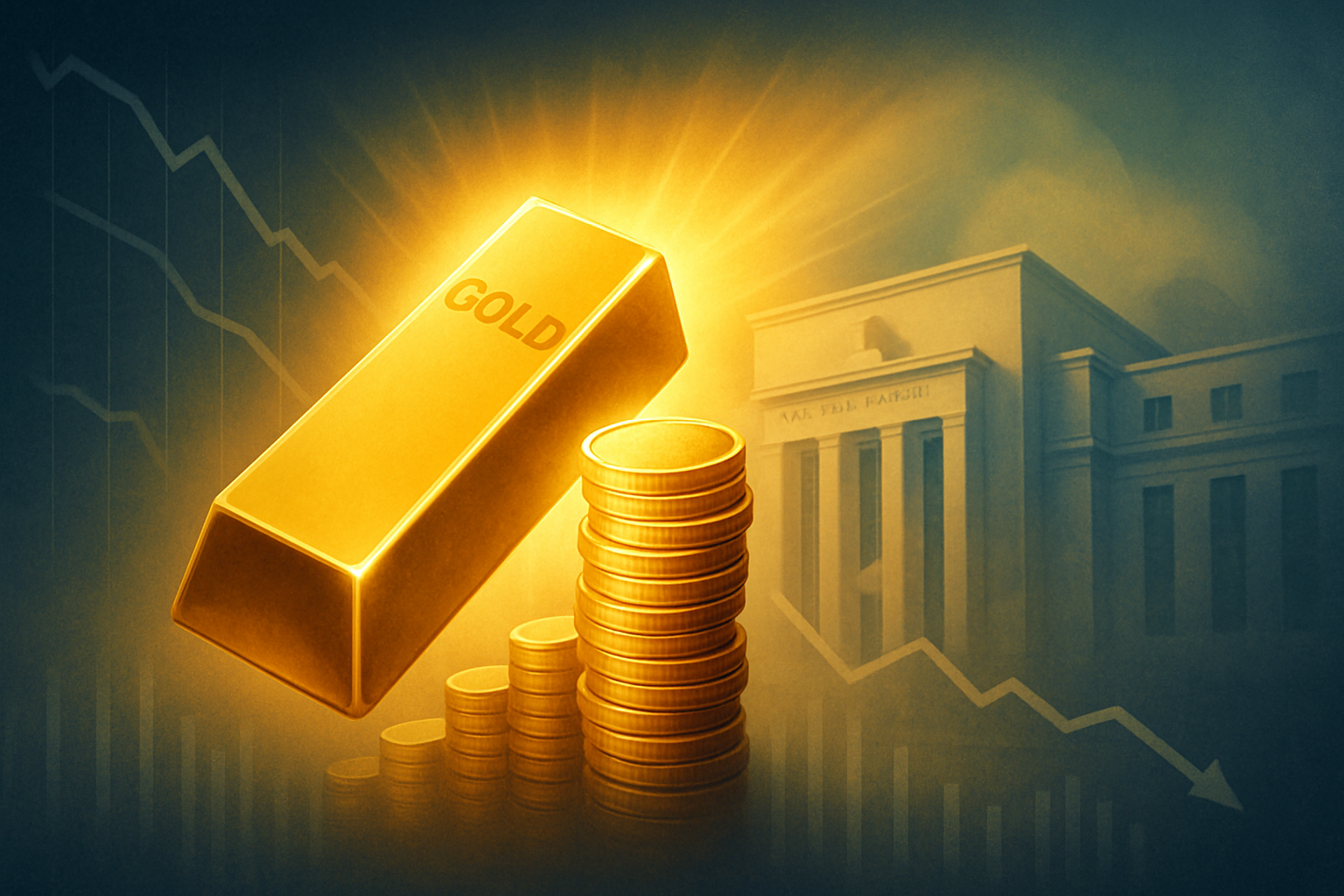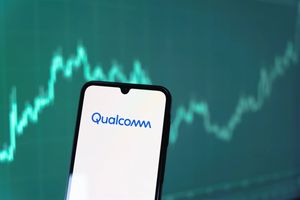
Gold prices have surged to unprecedented record highs, with the precious metal touching an all-time peak of $4,179.48 per ounce on October 14, 2025. This historic rally, which has seen gold gain a remarkable 57% year-to-date, underscores a profound shift in global investor sentiment, signaling a robust "flight to safety" amidst persistent economic uncertainties and escalating geopolitical tensions. The immediate implications are significant, as investors increasingly turn to gold as a traditional safe-haven asset and a vital hedge against inflation and potential currency devaluation.
This meteoric rise is inextricably linked to the Federal Reserve's increasingly dovish monetary policy stance. Anticipated interest rate cuts, driven by concerns over a "shaky job market" and a desire to stimulate economic activity, are diminishing the appeal of yield-bearing assets and making non-yielding gold significantly more attractive. This environment of lower borrowing costs and a potentially weakening U.S. dollar is creating a fertile ground for gold's continued ascent, reshaping portfolio strategies across the financial landscape.
Unpacking Gold's Historic Ascent and the Fed's Pivotal Role
The year 2025 has marked a truly historic period for gold, culminating in its record-breaking performance. On October 14, the spot price of gold reached an all-time high of $4,179.48 per ounce, with U.S. gold futures for December delivery also climbing to $4,187.50. This surge represents gold's strongest performance since 1979, having already breached the $4,000 per ounce mark on October 8, a rapid ascent taking just 36 days from the $3,500 threshold.
This remarkable rally is fueled by a confluence of powerful drivers. Foremost among them are the growing expectations of aggressive interest rate cuts by the U.S. Federal Reserve. Following a rate cut in September 2025, markets are now pricing in a near-certainty of another 25-basis-point (bps) reduction in October, with further cuts anticipated in December. This dovish pivot, first signaled in late 2024, is primarily motivated by concerns over a weakening U.S. labor market, as Fed Chairman Jerome Powell explicitly highlighted the growing risk of a significant slowdown in hiring. The Fed's commitment to easing financial conditions is further evidenced by signals that the conclusion of its quantitative tightening (QT) program "may be coming into view."
Beyond monetary policy, heightened geopolitical tensions—including renewed trade disputes between the U.S. and China, and ongoing conflicts in Ukraine and the Middle East—are significantly contributing to safe-haven demand. A weakening U.S. dollar, a typical consequence of a dovish Fed, also makes gold cheaper and more appealing for international buyers. Moreover, stubbornly high inflation in the U.S., which has remained above the Fed's 2% target for over four years, reinforces gold's traditional role as an inflation hedge. Adding to this demand, central banks globally have been increasing their gold holdings, diversifying away from traditional currencies in an uncertain world.
Companies Poised to Win or Lose in the Golden Era
The unprecedented surge in gold prices is creating distinct winners and losers across various sectors, profoundly impacting public companies tied to the precious metal. Gold mining companies, in particular, are experiencing a significant boon, while industries reliant on gold as a raw material face considerable headwinds.
Gold mining giants are undoubtedly the primary beneficiaries. Companies like Barrick Gold Corp. (NYSE: GOLD), Newmont Corporation (NYSE: NEM), and Agnico Eagle Mines Limited (NYSE: AEM) are poised for substantial revenue growth and expanded profit margins. Higher gold prices translate directly into increased per-ounce profitability, allowing these miners to improve their balance sheets, fund exploration and development projects, and potentially return more capital to shareholders through dividends or buybacks. Smaller, junior mining companies with viable gold deposits may also see their valuations soar, attracting new investment for project development. However, these companies must also contend with rising operational costs, including energy and labor, which could partially offset the gains from higher gold prices.
Conversely, industries that heavily utilize gold as a raw material are facing significant challenges. The jewelry sector, for instance, is grappling with soaring input costs. Luxury jewelers such as Tiffany & Co. (NYSE: TIF) (part of LVMH Moët Hennessy Louis Vuitton SE) and other retailers may see reduced consumer demand for high-end gold products as prices become prohibitive. This could force them to absorb some of the increased costs, leading to narrower margins, or pass them on to consumers, potentially impacting sales volumes. Similarly, electronics manufacturers that use gold in components, though typically in smaller quantities, could also see a marginal increase in their production costs. Companies holding significant gold reserves as part of their investment portfolios, such as certain asset management firms or sovereign wealth funds, are also experiencing substantial paper gains, enhancing their overall asset value.
Wider Significance: Gold's Enduring Appeal in a Shifting Landscape
The current surge in gold prices to record highs is more than just a market anomaly; it represents a profound reflection of broader industry trends and shifting global dynamics. This event underscores gold's enduring role as the ultimate safe-haven asset, particularly during periods of economic uncertainty and monetary policy transitions. It highlights a growing lack of confidence in traditional financial instruments and fiat currencies, pushing investors towards tangible assets.
Historically, gold has consistently demonstrated its inverse relationship with interest rates and the U.S. dollar. As the Federal Reserve signals a prolonged period of lower rates and potentially a weaker dollar, the opportunity cost of holding non-yielding gold diminishes, making it an attractive alternative to bonds and other interest-bearing assets. This aligns with historical precedents where periods of dovish central bank policies and inflationary pressures have typically seen gold outperform. The current environment, marked by persistent inflation above the Fed's target for over four years and escalating geopolitical tensions, further solidifies gold's appeal as a hedge against both economic instability and systemic risk.
The ripple effects of this gold rally extend beyond direct market participants. Competitors in the broader commodities market may see increased interest as investors diversify their inflation hedges. Partners in the financial services sector, particularly those offering precious metals investment products, are likely to benefit from increased client demand. Regulatory bodies will also be closely monitoring the stability of financial markets, especially if the "flight to safety" accelerates, potentially leading to increased scrutiny of liquidity and risk management practices. This trend also signals a potential shift in global reserve asset strategies, with central banks continuing to diversify their holdings away from traditional reserve currencies, a move that could have long-term implications for the international monetary system.
The Road Ahead: Navigating Gold's Future Trajectory
Looking ahead, the trajectory of gold prices will largely be dictated by the Federal Reserve's monetary policy decisions and the evolving global economic and geopolitical landscape. In the short term, further interest rate cuts by the Fed in October and December 2025, as widely anticipated, are expected to provide continued tailwinds for gold. A sustained dovish stance, coupled with ongoing concerns about the U.S. labor market and inflation, could propel gold prices even higher, potentially testing new psychological barriers. However, the rapid appreciation also raises the potential for near-term corrections or profit-taking, as technical indicators suggest the market may be overbought.
In the long term, gold's role as a strategic asset is likely to strengthen. Should the global economy face a more significant downturn or if geopolitical tensions escalate further, gold's safe-haven appeal will intensify. Market opportunities may emerge for investors looking to diversify portfolios, with gold offering a vital hedge against systemic risks. Conversely, a stronger-than-expected economic recovery or a hawkish pivot by the Fed, though less likely in the immediate future, could present challenges to gold's upward momentum. Companies in the gold mining sector will need to strategically manage their capital expenditures and operational efficiencies to capitalize on higher prices while mitigating cost pressures.
Potential scenarios range from a continued bullish run, driven by aggressive Fed easing and persistent global instability, to periods of consolidation or modest pullbacks if economic data improves or geopolitical tensions de-escalate. Investors should watch for key indicators such as the Fed's official statements, inflation reports, employment data, and geopolitical developments. Any shift in the Fed's rhetoric or a significant change in global risk appetite could trigger substantial movements in gold prices. The "lower rates for longer" environment, combined with sustained demand from central banks and individual investors, suggests that gold is poised to maintain a prominent role in investment strategies for the foreseeable future.
Conclusion: A Golden Era Shaped by Monetary Policy and Global Uncertainty
The surge in gold prices to record highs in October 2025 marks a pivotal moment in financial markets, driven primarily by the Federal Reserve's dovish signals and a pervasive sense of global uncertainty. The precious metal's ascent to $4,179.48 per ounce is a clear indicator of investors' growing preference for tangible assets as a hedge against inflation, economic fragility, and geopolitical risks. The Fed's anticipated interest rate cuts, aimed at bolstering a "shaky job market," have significantly reduced the opportunity cost of holding non-yielding gold, making it an increasingly attractive component of diversified portfolios.
Moving forward, the market will remain highly sensitive to the Fed's monetary policy pronouncements and macroeconomic data. While the immediate outlook for gold appears bullish due to expected further rate cuts and ongoing safe-haven demand, investors should remain vigilant for potential volatility and short-term corrections. The enduring significance of this event lies in its affirmation of gold's timeless role as a store of value and a protector of wealth during turbulent times. This "golden era" is likely to reshape investment strategies, with a renewed focus on diversification and risk mitigation.
Investors should closely monitor the Federal Reserve's upcoming policy meetings, particularly the October 28-29 session, for further guidance on interest rates and quantitative tightening. Additionally, tracking global inflation figures, employment reports, and geopolitical developments will be crucial for understanding gold's future trajectory. The current environment strongly suggests that gold will continue to be a critical asset for those seeking stability and growth in an increasingly unpredictable world.
This content is intended for informational purposes only and is not financial advice




